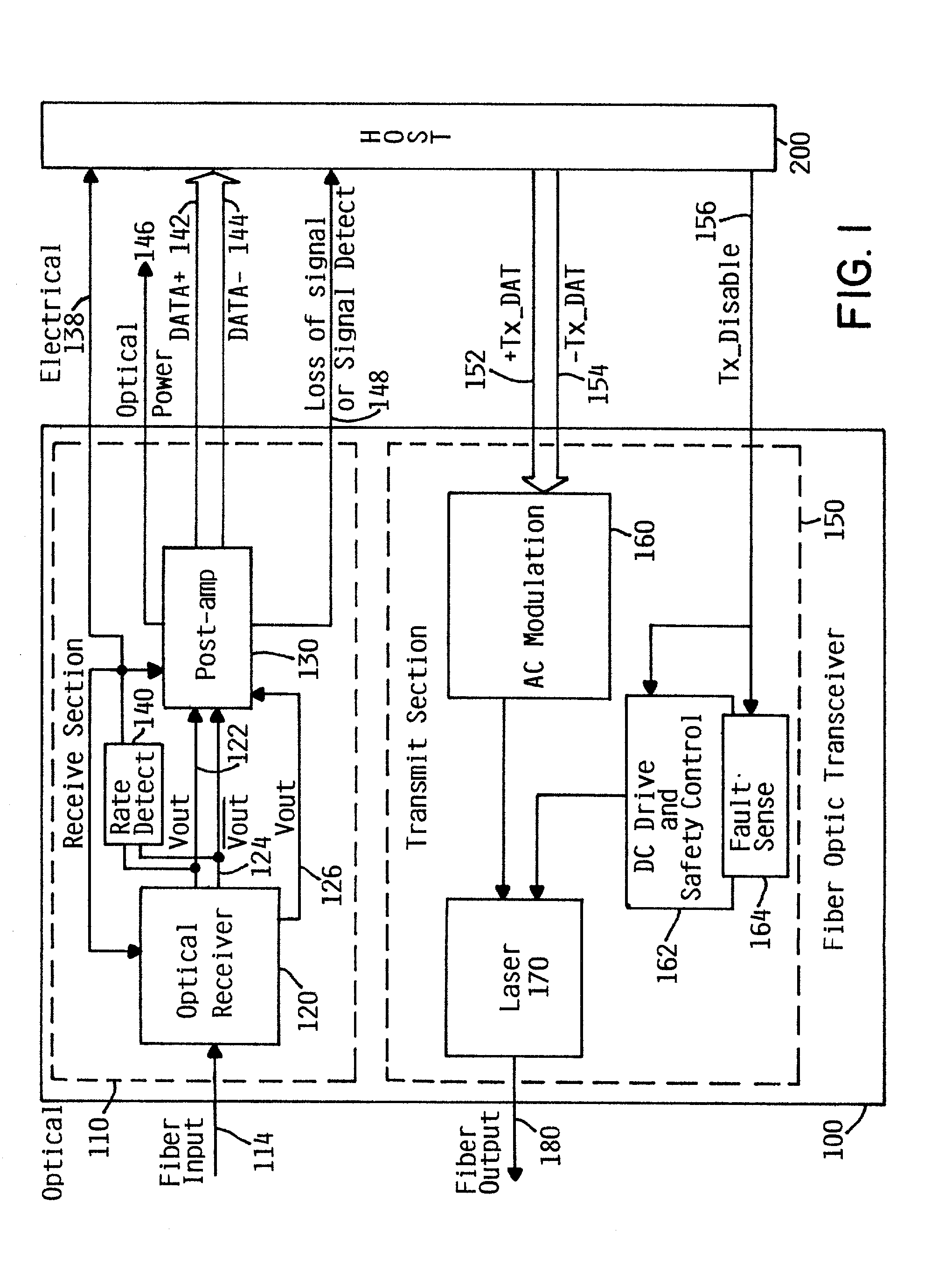Detection of data transmission rates using passing frequency-selective filtering
- Summary
- Abstract
- Description
- Claims
- Application Information
AI Technical Summary
Benefits of technology
Problems solved by technology
Method used
Image
Examples
Embodiment Construction
[0023]FIG. 1 is a simplified block diagram of a fiber optic transceiver 100 depicting a receive section 110 and a transmit section 150. The fiber optic transceiver 100 preferably provides a high-speed serial or parallel electrical interface for connecting to a host 200, such as computer or device processors, switches, and peripherals through an optical fiber cable. Specific systems which would benefit from the invention are fiber optic applications in Gigabit Ethernet, Infiniband, OIF, SONET, and Fibre Channel for multi-gigabit data rates. Furthermore, although the integrated circuits herein usually of silicon CMOS and / or bipolar semiconductor technologies, one of skill in the art will understand that other semiconductor materials may be used for other speeds of data transmission or other wavelengths of light. In the Gigabit Ethernet environment, for example, transceiver 100 can be used in such as a host 200 as local area network (LAN) switches or hubs, as well as in interconnecting...
PUM
 Login to View More
Login to View More Abstract
Description
Claims
Application Information
 Login to View More
Login to View More - R&D
- Intellectual Property
- Life Sciences
- Materials
- Tech Scout
- Unparalleled Data Quality
- Higher Quality Content
- 60% Fewer Hallucinations
Browse by: Latest US Patents, China's latest patents, Technical Efficacy Thesaurus, Application Domain, Technology Topic, Popular Technical Reports.
© 2025 PatSnap. All rights reserved.Legal|Privacy policy|Modern Slavery Act Transparency Statement|Sitemap|About US| Contact US: help@patsnap.com



